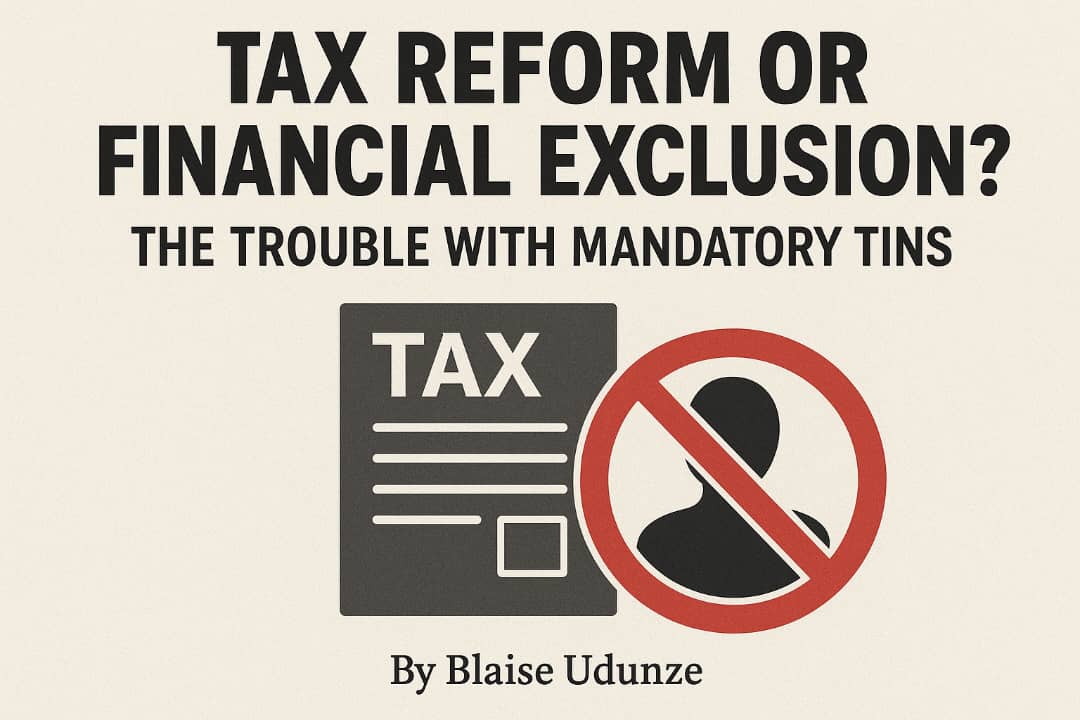Feature/OPED
How Technology is Pumping up Business in 2021: 3D Offices, 4G on the Moon, Gamification of Everything, and 6 More Hot Trends

Research firm Wunderman Thompson Intelligence has released its 2021 trends report.
The report contains 100 predictions about how technology will affect different areas of life and business: culture, commerce, sports (for example, how the best online sports betting apps will change), and others. We have selected the most interesting of them – let’s see how the world has changed and will change this year.
A Revolution in the Gaming Industry and the Rise of Cloud Gaming
The consumer gaming industry is growing rapidly – the market is expected to reach $198 billion by 2024, and that’s not including sales of augmented and virtual reality hardware. Digital games are beginning to be used at events and concerts as an element of audience engagement. Traditional gaming spaces are turning into places where people can gather and communicate remotely, including solving business issues.
For example, Unconventional launched in 2020 as a virtual event space with 3D participant avatars and game worlds, and it now has 50,000 users. It is widely used, from business meetings to birthday parties. Since offline events are inaccessible because of the pandemic, people have developed a demand for online events that involve unique user experiences they previously had in games.
Games could change the world over the next decade and become the dominant technology platforms as social media used to be.
Meanwhile, big companies are betting on cloud gaming. For example, Facebook has added cloud games to its gaming platform, and China’s Tencent (the developer of the messenger WeChat) has teamed up with telecommunications company Huawei to develop its own cloud gaming platform.
Tech companies are investing in cloud-based streaming games because they are the future: It is more convenient for users to access the game on-demand and from any device. Companies save on deploying their own infrastructure to host gaming applications.
Virtual Sports and Gamified Fitness
In 2020, due to the pandemic, many sports competitions were cancelled and live sports events disappeared, which led to the convergence of real and virtual sports with cybersports.
For example, racers were already using simulators to train, now brands are entering the market with solutions for virtual races in which amateurs can participate. Aston Martin released a $76,300 AMR-C01 racing simulator in September.
Zwift, an online cycling and running training platform, held the first Tour de France international cycling race in virtual mode. Professional and amateur athletes participated. Athletes competed for prizes, while amateurs were able to compare their strengths with the professionals by competing with them on the same courses.
And Adidas released a smart sneaker insole that records physical data while playing real soccer: the number and strength of kicks, running speed, and so on. These stats can be uploaded to the EA Sports FIFA Mobile game and compare your results with other players.
In 2021, this trend will continue and traditional sports will continue to merge with virtual sports.
Fitness, too, is moving from the real world to the virtual. In April 2020, Oculus and Within released a new VR fitness app, Supernatural. It provides users with personalized virtual workouts surrounded by stunning scenery.
The Future of Mixed Reality
Mixed Reality (MR) is the union of virtual and real worlds. Virtual objects are added to the world around you that look like the real world. For example, a virtual painting on a real wall in a room is a mixed reality.
Adaptability and ease of use have made mixed reality a new trend in the gaming industry. Virtual reality (VR) equipment is expensive and cumbersome, and augmented reality (AR) is dependent on mobile devices. According to Mordor Intelligence, the mixed reality market was valued at $382.6 million in 2019 and will grow further.
In October 2020, Nintendo released a new game called Mario Kart Live: Home Circuit. Participants in the game compete on remote-controlled cars inside their homes, interacting with elements of the virtual and real worlds.
Indian telecommunications giant Reliance Jio announced Jio Glass mixed reality glasses, and Facebook and Google have already invested in the company. Judging by the patents filed, a similar device will soon be released by Apple.
Mixed reality is an attractive solution for enhancing the user experience. It may soon be used in most entertainment spaces and events.
Contactless Air Travel
Airlines and airports are adopting contactless ways to interact with passengers wherever possible. They’re aiming for passengers to use mobile apps instead of publicly available touchpads and contact airport staff. This avoids queues and crowds.
For example, more companies have begun sending advance notice of flight delays or cancellations, introduced contactless check-in and luggage tag printing, and implemented meal pre-ordering and online payment. And some airports are introducing a system that allows boarding passes to be scanned at a distance of more than 1.5 meters.
Companies are also thinking about places on the plane where you can’t do completely without touching, such as restrooms and in-flight entertainment systems. There aren’t any innovations yet, but designers are trying to rethink these approaches and keep the number of touches to a minimum.
Technology Conquers Space
The leading technology brands are beginning to explore space. NASA and Nokia are planning to deploy a 4G network on the Moon. This will improve data transmission and help astronauts control moonwalkers, navigate in space, and broadcast video in real-time.
Cloud technology is also moving beyond our planet. Analysts predict that by the end of the decade, total revenue from space-related cloud services could be about $15 billion. New cloud computing services can be deployed using low-orbit spacecraft and traditional satellites.
Virtual Offices Instead of Real Offices
Remote working is becoming the norm. Many companies are rethinking this work format, offering new and unusual solutions.
For example, Dropbox announced that it is now becoming virtual-first, meaning that it is primarily focused on virtual workspaces and is abandoning its real offices. This is unusual because the company signed the largest lease in San Francisco history in 2017, and will now rent out the space itself.
Other companies are creating virtual offices where employees can walk around familiar spaces, attend meetings and just gather for coffee and conversation.
In April 2020, Sine Wave Entertainment launched Breakroom, a virtual world product for remote workplaces that provides 3D offices for companies such as Virgin Group and Torque Esports. Italian energy company Enel gathers employees as avatars in virtual meeting rooms using a combination of augmented and virtual reality technology.
Experts believe that the time of large offline offices is a thing of the past, the time of distributed work is coming.
The Virtualization of Stores Continues
Digital fashion and virtual closets are one of the trends gaining popularity. For example, digital virtualization allows fashion houses to showcase their collections, and brands can create virtual spaces with unique designs.
Virtual fashion house The Fabricant creates unique designs that exist only digitally. Using 3D modelling, they design outfits for customer avatars that can only be worn in digital environments such as games or social media.
Also, the pandemic has led to fewer visitors at car dealerships, so innovative companies are changing the car-buying process by making it easier to choose online.
Buyers of Volkswagen Australia can visit a virtual showroom where they can see how a car would look in different conditions, open and close doors, interact with the interior and, of course, make a purchase. Ford has launched a similar AR service, which allows you to explore the new F-150 car in augmented reality: see it inside and outside, assess how it would look in a parking lot near your home.
Retail continues the transition to online, offering a personalized experience for shoppers who prefer digital technology. Live Commerce is an online sales model where influencers showcase items for sale in real-time. The format has been popular in Asian markets for several years and is now experiencing a global boom. This format now sells everything from doorbells to makeup products.
In June 2020, Canadian e-commerce platform Livescale announced a partnership with Shopify, a popular e-commerce platform in North America. According to Livescale, the number of business inquiries has increased fivefold since March 2020.
The Emergence of Stores Without Shoppers
Retailers are shifting to a store format without shoppers. Such outlets are being served by online retailers. In September 2020, Whole Foods Market opened a store in New York City that is closed to the public. It is for delivery and pickup only. Walmart is repurposing four of its U.S. stores for e-commerce. Other chains are adopting similar solutions.
Those retailers who are still serving customers are challenged by people’s desire to limit contact when they buy. That’s why contactless technology will be developed to simplify the choice of goods.
For example, cosmetics stores already offer customers virtual makeup: mirrors allow them to “try on” lipstick, and artificial intelligence will help pick out shadows that best match the shade of the buyer’s skin.
Developments in Delivery Technology and Electric Transportation
Thanks to the growth of e-commerce in 2020, the delivery industry has also seen rapid growth. According to a study by the World Economic Forum, the growth in e-commerce demand will lead to a 36% increase in delivery vehicles in the world’s 100 largest cities by 2030.
The Consumer Electronics Show was held in January 2021, where companies showcased their new developments in delivery:
- Skyward and UPS Flight Forward organized drone delivery.
- Cenntro Automotive Group unveiled the CityPorter electric vehicle, which is designed to drive around town and deliver goods to customers.
- General Motors has launched a new business line for delivery, BrightDrop. It is an entire ecosystem of electric vehicles, through which companies can reduce costs and be more environmentally friendly. The first customer is FedEx Delivery Service, which will get BrightDrop EV600 electric vans in late 2021.
- FedEx Express CEO Richard Smith said the pandemic has greatly accelerated e-commerce and door-to-door delivery. He believes the sector will continue to grow and by 2023, 100 million parcels a day will be delivered to U.S. residences. Before the pandemic, that growth was projected only by 2026.
There is other evidence that the electric transportation market will grow. For example, in January 2020, the British company Arrival received an order for 10,000 electric vehicles from UPS, and also hopes to receive an $85 million investment from Hyundai to develop production. And in December 2020, U.S.-based Canoo published plans for an “all-electric multi-purpose delivery vehicle,” expected to be released in 2023.
Feature/OPED
Why Africa Requires Homegrown Trade Finance to Boost Economic Integration

By Cyprian Rono
Africa’s quest to trade with itself has never been more urgent. With the African Continental Free Trade Area (AfCFTA) gaining momentum, governments are working to deepen intra-African commerce. The idea of “One African Market” is no longer aspirational; it is emerging as a strategic pathway for economic growth, job creation, and industrial competitiveness. Yet even as infrastructure and regulatory reforms advance, one fundamental question remains; how will Africa finance its cross-border trade, across markets with diverse currencies, regulations, and standards?
Today, only 15 to 18 percent of Africa’s internal trade happens within the continent, compared to 68 percent in Europe and 59 percent in Asia. Closing this gap is essential if AfCFTA is to deliver prosperity to Africa’s 1.3 billion people.
A major constraint is the continent’s huge trade finance deficit, which exceeds USD 81 billion annually, according to the African Development Bank. Small and medium-sized enterprises (SMEs), which provide more than 80 percent of the continent’s jobs, are the most affected. Many struggle with insufficient collateral, stringent risk profiling and compliance requirements that mirror international banking standards rather than the realities of African business.
To build integrated value chains, exporters and importers must operate within trusted, predictable, and interconnected financial systems. This requires strong pan-African financial institutions with both local knowledge and continental reach.
Homegrown trade finance is therefore indispensable. Pan-African banks combine deep domestic roots with extensive regional reach, making them the most credible engines for financing trade integration. By retaining financial activity within the continent, homegrown lenders reduce exposure to external shocks and keep liquidity circulating locally. They also strengthen existing regional payment infrastructure such as the Pan-African Payment and Settlement System (PAPSS), developed by the Africa Export-Import Bank (Afreximbank) and backed by the African Continental Free Trade Area (AfCFTA) Secretariat, enabling faster, cheaper and seamless cross-border payments across the continent.
Digital transformation amplifies this advantage. Real-time payments, seamless Know-Your-Customer (KYC) verification, automated credit scoring and consistent service delivery across markets are essential for intra-African trade. Institutions such as Ecobank, operating in 34 African countries with integrated core banking systems, demonstrate how such digital ecosystems can enable continent-wide commerce.
Platforms such as Ecobank’s Omni, Rapidtransfer and RapidCollect, together with digital account-opening services, make it much easier for traders to operate across borders. Rapidtransfer enables instant, secure payments across Ecobank’s 34-country network, reducing delays in regional trade, while RapidCollect gives cross-border enterprises the ability to receive payments from multiple African countries into a single account with real-time confirmation and automated reconciliation. Together, these solutions create an integrated digital ecosystem that lowers friction, accelerates payments, and strengthens intra-African commerce.
Trust, however, remains a significant barrier. Cross-border commerce depends on the confidence that partners will honour contracts, deliver goods as promised, pay on time, and present authentic documentation. Traders often lack reliable information on potential partners, operate under different regulatory regimes, and exchange documents that are difficult to verify across borders. This heightens the risk of fraud, non-payment, and contractual disputes, discouraging businesss from expanding beyond familiar markets.
Technology is closing this trust gap. Artificial Intelligence enables lenders to assess risk using alternative data for SMEs without formal credit histories. Distributed ledger tools make shipping documents, certificates of origin, and inspection reports tamper-proof. In addition, supply-chain visibility platforms enable real-time tracking of goods and cross-border digital KYC ensures that both buyers and sellers are verified before any transaction occurs.
Ecobank’s Single Trade Hub embodies this trust infrastructure by offering a secure digital marketplace where buyers and sellers can trade with confidence, even in markets where no prior relationships exist. The platform’s Trade Intelligence suite provides customers instant access to market data from customs information and product classification tools across 133 countries.
Through its unique features such as the classification of best import/export markets, over 25,000 market and industry reports, customs duty calculators, and local and universal customs classification codes, businesses can accurately assess market opportunities, anticipate trends, reduce compliance risks, and optimise supply chains, ultimately helping them compete and grow in regional and global markets.
SMEs need more than financing. Many operate in cash-heavy cycles where suppliers and logistics providers require upfront payment. Lenders can support these businesses with advisory services, business intelligence, compliance guidance, and platforms for secure partner verification, contract negotiation, and secure settlement of payments. Trade fairs, industry forums, and partnerships with chambers of commerce further build the trust networks needed for cross-border trade.
Ultimately, Africa’s path toward meaningful trade integration begins with financial integration. AfCFTA’s promise will only be realised when enterprises can trade with confidence, knowing that payments will be honoured, partners verified, and disputes resolved. This requires collaboration between banks, regulators, and trade institutions, alongside harmonised financial regulations, interoperable payment systems, and continent-wide verification networks.
Africa can no longer rely on external actors to finance its trade. Its economic transformation depends on strong, trusted, and digitally enabled African financial institutions that understand Africa’s unique risks and opportunities. By building an African-led trade finance ecosystem, the continent can unlock liquidity, reduce dependence on external currencies, empower SMEs, and retain more value locally. Africa’s trade revolution will accelerate when its financing is driven by African institutions, African systems, and African ambition.
Cyprian Rono is the Director of Corporate and Investment Banking for Kenya and EAC at Ecobank Kenya
Feature/OPED
Tax Reform or Financial Exclusion? The Trouble with Mandatory TINs

By Blaise Udunze
It is not only questionable but an aberration that a nation where over 38million Nigerians remain financially excluded, where trust in institutions is fragile, and where citizens are pressured under the weight of rising living costs, the use of Tax Identification Number (TIN) has been specified as the only option for their bank accounts operation from January 1, 2026 by the Federal Government of Nigeria.
In practice, the policy spearheaded by Taiwo Oyedele, Chairman of the Presidential Committee on Fiscal Policy and Tax Reforms, is rooted in the Nigerian Tax Administration Act (NTAA), and the intention can be understood in the areas of improving tax compliance, widening the tax net, and formalizing economic activities. But in practice, the directive risks becoming yet another well-meaning reform that punishes the wrong people, disrupts financial inclusiveness, and potentially destabilises an already stressed economy.
Yes, Nigeria needs tax reforms. Yes, the country must broaden its tax base. And yes, public revenues must increase to address fiscal pressures.
But compelling citizens to obtain TINs as a condition for operating bank accounts is the wrong tool for the right objective.
Below are five core arguments against the directive, and sustainable alternatives that actually strengthen tax compliance without endangering banking access or punishing informal earners.
The Directive Risks Deepening Financial Exclusion
Nigeria still struggles with financial inclusion. According to several official assessments, over 38 million adults remain outside the formal financial system. Many of them operate small, irregular businesses, survive through subsistence earnings, or depend on cash-based livelihoods.
The Federal Government’s compulsory TIN-for-bank-accounts policy is built on the assumption that every banked Nigerian is structured, organised, and tax-ready. This is false.
For instance, the rural market woman with N30,000 in rotating savings, the okada rider who deposits cash once a week, the petty trader using a mobile POS agent account, the retiring pensioner managing a small monthly income, and the migrant worker sends small remittances to their family. These are not tax evaders; they are survivalists.
Most operate bank accounts not because they run formal businesses, but because those accounts are essential to modern financial life: receiving transfers, accessing loans, participating in digital commerce, saving against emergencies, and avoiding the risks of moving cash in insecure environments.
By creating an additional bureaucratic barrier, the directive risks pushing millions back into a cash-dominant shadow economy, precisely the opposite outcome of what Nigeria’s financial-sector reforms are trying to achieve.
Bank Accounts Are Not Proof of Taxable Income
The NTAA clarifies that the TIN requirement applies only to taxable persons, individuals engaged in trade, employment, or income-generating activities.
But herein lies the problem: banks cannot determine who is “taxable” and who is not. Banks only see deposits and withdrawals. They do not audit the source or consistency of income. They are not tax authorities.
A student may run a small online clothing resale gig. A retiree may occasionally rent out farmland.
A dependent may receive cash support from a relative abroad. A job seeker may get intermittent gifts from family.
Who decides which of these scenarios qualifies as taxable? Banks? FIRS? Or will citizens be expected to self-declare under threat of account restrictions?
The result will be confusion, over-compliance, and mass panic with banks indiscriminately demanding TINs from everyone to avoid regulatory penalties.
This not only contradicts the spirit of the law but also exposes ordinary Nigerians to harassment and arbitrary compliance requirements.
The Policy Could Trigger Disruption, Panic Withdrawals, and Cash Hoarding
Whenever Nigerians perceive threats to their access to funds, the natural reaction is withdrawal and hoarding. We saw it during:
– the 2023 Naira redesign crisis,
– the 2016 TSA-bank consolidation tightening, and multiple periods of financial instability.
Telling citizens that bank accounts may face “operational restrictions” if they do not obtain a TIN creates a predictable behavioural response: people will rush to withdraw money.
This would be disastrous for a banking system already pressured by:
– high interest rates,
– inflation eroding deposits,
– rising loan defaults, and
– declining public trust.
Any government policy that unintentionally creates an incentive for citizens to flee the formal banking system is counterproductive.
The TIN Requirement Will Become a Bureaucratic Nightmare
Even if millions of Nigerians want to comply, the system is not ready. Nigeria’s administrative infrastructure does not have the capacity to process tens of millions of TIN registrations within months without:
– long queues,
– delays,
– data mismatches,
– duplicate records, and
– systemic errors.
The National Identity Number (NIN)-SIM registration experience is a painful reminder of what happens when ambitious policy meets weak execution capacity.
– Citizens spent months in overcrowded enrolment centres.
– Millions were blocked from services.
– Data inconsistencies persisted.
– The economy suffered productivity losses.
If Nigeria could not seamlessly synchronise NIN and SIM data, how will it synchronise NIN, BVN, and TIN at a national scale without dislocation?
Forcing TIN Adoption Ignores the Real Problem: Nigeria’s Broken Tax Culture
The Federal Government’s real challenge is not that citizens lack TINs, but that they lack trust in how taxes are used.
A government cannot widen the tax net when:
– tax leakages remain widespread,
– citizens feel services do not match taxation,
– corruption perceptions are high,
– government spending lacks transparency, and
– taxpayers do not feel seen, heard, or valued.
Coercion does not build a tax culture. Engagement does. Policy does not create legitimacy. Accountability does.
If the Federal Government wants Nigerians to freely participate in the tax system, it must earn legitimacy first, not mandate compliance through financial restrictions.
What the Government Should Do Instead: A Smarter Path to Tax Reform
Instead of enforcing a policy that may backfire economically and socially, the Federal Government can adopt four smarter, people-centred alternatives.
– Automatic TIN Issuance Linked to NIN and BVN
Rather than forcing Nigerians to apply manually, the government should:
- auto-generate TINs for all existing BVN/NIN holders,
- send the TINs via SMS, email, and bank alerts,
- allow self-activation only when needed for tax obligations.
This eliminates queues, delays, and confusion.
– Build a Voluntary Tax Compliance Culture Through Transparency and Incentives
Tax morale improves when citizens see value. Government should:
- publish annual audited reports of tax revenue use,
- incentivise compliant taxpayers with benefits (priority access to government grants, credit scoring, etc.),
- simplify tax filings for small businesses.
People comply more when they feel respected, not coerced.
– Target High-Value Tax Evaders, Not Low-Income Account Holders
Nigeria’s real tax leakages come from:
- large corporations shifting profits,
- politically exposed persons,
- illicit financial flows,
- multinational tax avoidance strategies,
- the informal “big money” class operating outside the banking system.
Instead of threatening small depositors, the government should strengthen:
- FIRS intelligence and investigation units,
- inter-agency data integration (CAC, Customs, Immigration),
- beneficial ownership transparency enforcement.
The fight against tax evasion should focus on those hiding billions, not those depositing thousands.
– Strengthen Digital Tax Platforms for Easy Self-Registration and Compliance
If tax registration becomes as easy as opening a social media account, compliance will rise naturally. The government should build:
- a mobile-first tax app,
- simplified online TIN retrieval,
- one-click tax filing for gig workers and small traders.
Digital convenience can achieve what regulatory coercion cannot.
Reform Should Not Punish the Public
No doubt, tax reforms are needed urgently, but they must come with a human face, an intelligent, equitable, and aligned with the realities of ordinary Nigerians.
The TIN-for-bank-accounts policy, while well-intentioned, risks undermining financial inclusion, triggering economic instability, and imposing unnecessary burdens on millions who are not tax evaders but survival-based earners.
Good tax policy is built on trust, not fear. On transparency, not threats. On civic legitimacy, not administrative compulsion.
If the Federal Government truly wants to modernise Nigeria’s tax system, it must focus not on restricting citizens’ access to their own money, but on:
- repairing tax trust,
- digitising compliance,
- targeting the real evaders, and
- making participation easier, not harder.
Financial inclusion took Nigeria decades to build. We cannot afford a policy that carelessly reverses these gains.
A better tax system is possible, but it must start with the people, not with their bank accounts.
Blaise, a journalist and PR professional, writes from Lagos, can be reached via: [email protected]
Feature/OPED
Dangote and Farouk: The Distance Between Capital and Conscience

By Abiodun Alade
Within the space of 48 hours, Aliko Dangote offered Nigeria a rare demonstration of what leadership looks like when power is exercised with responsibility and consequence.
First came the announcement of a N100 billion annual education support programme — a decade-long N1 trillion commitment projected to keep more than 1.3 million Nigerian children in school. Its architecture was intentional, not ornamental: girls’ education, STEM disciplines, technical skills, and those children most likely to disappear quietly into the margins of poverty were placed at the centre, not the footnotes.
Then, almost immediately, his refinery reduced the price of Premium Motor Spirit by over N100 per litre. This was not achieved through government fiat, subsidy or public funds, but through internal cost absorption, aimed at easing the pressure of inflation on households, transport operators and small businesses already stretched thin.
Two decisive interventions. One individual. Forty-eight hours.
In a country where scarcity has been normalised and excuses institutionalised; these actions stand out precisely because they are uncommon. Nigeria does not lack wealth. It lacks the nerve to use it responsibly.
Dangote’s interventions were not symbolic gestures designed for applause. They were structural acts. Education secures the future. Affordable energy steadies the present. Together, they form the foundation of any serious development strategy.
Now set this against the performance of Nigeria’s downstream petroleum regulation.
Engr Farouk Ahmed, Chief Executive of the Nigerian Midstream and Downstream Petroleum Regulatory Authority (NMDPRA), presides over a sector whose policy objectives are clearly stated: support domestic refining, reduce imports, conserve foreign exchange and strengthen energy security. These goals are enshrined in the Petroleum Industry Act and reinforced by the Federal Government’s Nigeria First policy.
Yet in practice, the downstream market remains crowded with import licences, uneven enforcement and regulatory decisions that continue to weaken local refining. Even with Africa’s largest refinery operating on Nigerian soil, import dependence persists — not because capacity is lacking, but because incentives remain misaligned.
This is where comparison ends.
Dangote and Farouk Ahmed do not operate on the same economic or moral plane. One commits private capital to solve national problems. The other leads a public institution whose outcomes are increasingly questioned by industry players, economists and the public alike.
One expands supply.
The other presides over a system where scarcity recurs.
One cuts prices.
The other manages a framework in which price instability has become familiar.
One reinvests personal wealth into Nigerian children.
The other reportedly expends questionable millions of dollars on secondary education abroad, while in his home state, Sokoto, thousands of children drop out of school over tuition fees as low as N10,000.
Only in Nigeria does the arithmetic of public life so often defy reason. Where official incomes are modest, lifestyles sometimes appear imperial. Where the books are thin, the living is lavish. And where questions should naturally arise, silence frequently answers instead.
It is a country where some who labour in the open marketplace live with studied moderation, while others, known only to the payroll of the state, move with a splendour their salaries cannot reasonably sustain. Children are educated across distant borders, fees quoted in foreign currencies that mock the modest figures attached to public service, yet accountability remains elusive.
When regulators falter, it is rarely for lack of laws or mandates. More often, authority is softened by comfort, dulled by compromise, and entangled in interests it was meant to police. A regulator burdened by unanswered questions cannot stand upright; oversight weakens when conscience is clouded.
In such moments, one does not need a forensic accountant to sense disorder. A soothsayer is hardly required to see where lines have blurred, where vigilance has yielded to indulgence, and where public trust has quietly been mortgaged.
This is how institutions lose their moral centre — not always through spectacular scandal, but through a series of small indulgences that mature, unnoticed, into systemic decay.
The fuel price reduction alone deserves careful attention. In Nigeria, petrol is not merely a commodity; it is the bloodstream of the economy. When prices rise, transport fares rise. Food prices rise. School attendance drops. Small businesses shut early. Families cancel travel or risk storing petrol in jerry cans — turning highways into mobile fire hazards during festive seasons.
By reducing PMS prices by over N100 per litre, the Dangote Refinery accomplished what years of policy meetings failed to deliver. It restored breathing space. It returned dignity to commuters. It reduced pressure on traders. It saved millions of productive man-hours otherwise lost to queues, panic buying and logistical paralysis.
That this occurred alongside a historic education commitment is not accidental. It reflects an understanding that energy without education builds nothing, and education without economic stability cannot thrive.
Meanwhile, regulatory bottlenecks remain. Local refiners cite delays in approvals, vessel clearances and inconsistent enforcement. Importers continue to flourish. Arbitrage adapts. Rent-seeking survives. The system continues to reward trading over production.
This is not accidental. Systems behave exactly as they are designed to behave.
Nigeria does not suffer from a shortage of ideas. It suffers from a shortage of alignment. When private citizens act more decisively in the national interest than institutions legally mandated to do so, something fundamental is broken.
No country industrialises by frustrating its producers. No economy grows by privileging imports over domestic value creation. No regulator earns legitimacy by operating in tension with stated national objectives.
Dangote’s actions within 48 hours expose an uncomfortable truth: Nigeria’s most binding constraint is no longer capital, technology or scale. It is governance culture.
Leadership is revealed not by speeches, but by choices. In two days, one Nigerian chose to educate the future and ease the present. Others continue to curate systems that profit from delay, opacity and dependence.
History is rarely neutral.
It remembers who built.
And it remembers who stood in the way.
Abiodun, a communications specialist, writes from Lagos
-

 Feature/OPED6 years ago
Feature/OPED6 years agoDavos was Different this year
-
Travel/Tourism9 years ago
Lagos Seals Western Lodge Hotel In Ikorodu
-

 Showbiz3 years ago
Showbiz3 years agoEstranged Lover Releases Videos of Empress Njamah Bathing
-

 Banking7 years ago
Banking7 years agoSort Codes of GTBank Branches in Nigeria
-

 Economy3 years ago
Economy3 years agoSubsidy Removal: CNG at N130 Per Litre Cheaper Than Petrol—IPMAN
-

 Banking3 years ago
Banking3 years agoFirst Bank Announces Planned Downtime
-

 Banking3 years ago
Banking3 years agoSort Codes of UBA Branches in Nigeria
-

 Sports3 years ago
Sports3 years agoHighest Paid Nigerian Footballer – How Much Do Nigerian Footballers Earn

























